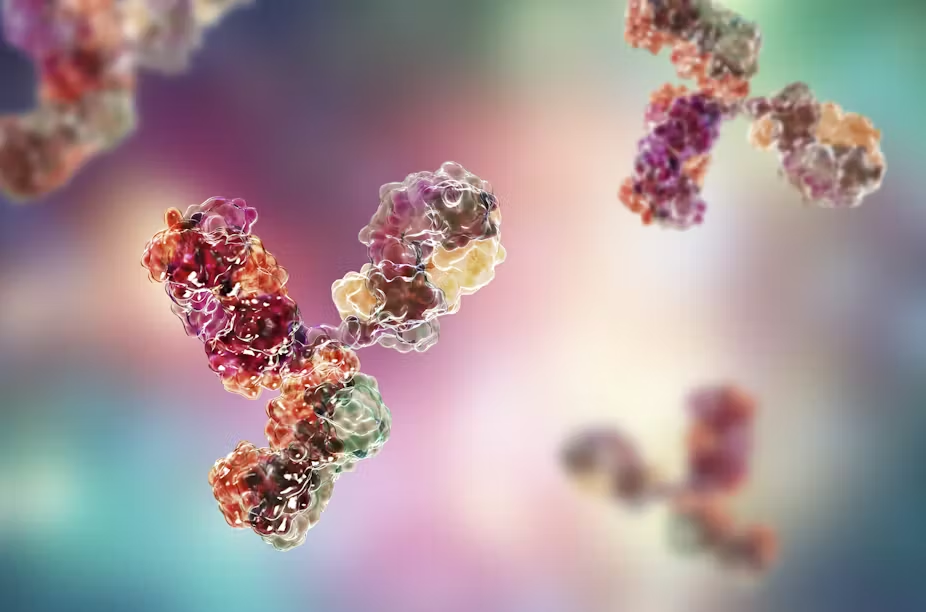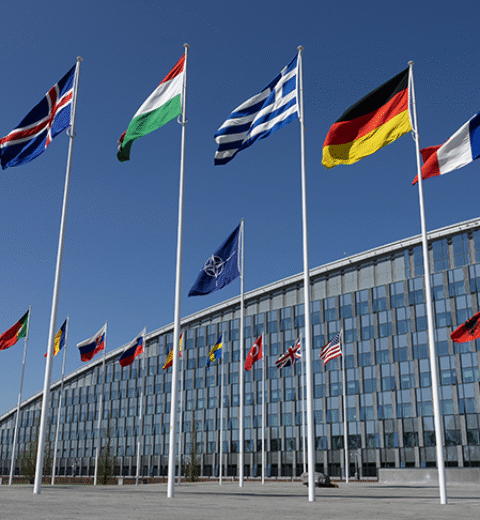An antibody (also known as an immunoglobulin) is a large, Y-shaped protein produced mainly by plasma cells, a type of white blood cell. Antibodies are a key component of the adaptive immune system, and their primary function is to recognize and bind to specific antigens — foreign substances such as bacteria, viruses, or toxins — to neutralize them or mark them for destruction by other components of the immune system.
Structure
An antibody consists of four polypeptide chains: two identical heavy chains and two identical light chains, linked by disulfide bonds. The molecule has a "Y" shape, with:
- Variable regions at the tips of the arms that bind to specific antigens.
- Constant regions that determine the antibody's class and effector function.
The antigen-binding site is formed by the variable regions of both the heavy and light chains and is highly specific to a particular molecular structure on the antigen.
Classes of Antibodies
In humans, there are five major classes (isotypes) of antibodies, each with distinct functions:
- IgG – The most abundant antibody in circulation; provides long-term immunity and is involved in secondary immune responses.
- IgA – Found mainly in mucosal areas such as the respiratory and gastrointestinal tracts, and in secretions like saliva and breast milk.
- IgM – The first antibody produced during an initial immune response; forms pentamers.
- IgE – Involved in allergic reactions and protection against parasitic infections.
- IgD – Primarily functions as a receptor on immature B cells; its exact role is less well understood.
Function
Antibodies perform several functions in immune defense, including:
- Neutralization – Blocking the biological activity of pathogens or toxins.
- Opsonization – Tagging pathogens for ingestion and elimination by phagocytes.
- Complement activation – Triggering a cascade of immune proteins that enhance pathogen destruction.
- Antibody-dependent cellular cytotoxicity (ADCC) – Recruiting natural killer (NK) cells to destroy infected or cancerous cells.
Production and Development
Antibodies are produced by B lymphocytes. Upon encountering their specific antigen, B cells can differentiate into plasma cells that secrete large quantities of antibodies. Each B cell produces antibodies with a unique specificity due to a process called V(D)J recombination, which rearranges gene segments to create diverse antigen-binding sites.
Applications in Biotechnology and Medicine
Antibodies have extensive applications in research, diagnostics, and therapeutics:
- Therapeutic use – Monoclonal antibodies are used to treat cancers, autoimmune diseases, and infectious diseases. Examples include trastuzumab (Herceptin), adalimumab (Humira), and pembrolizumab (Keytruda).
- Diagnostics – Antibody-based tests such as ELISA, Western blot, and lateral flow assays are widely used in medical diagnostics and research.
- Research tools – Antibodies are used in flow cytometry, immunohistochemistry, and other laboratory techniques to identify and isolate proteins and cells.
Engineering and Future Developments
Modern biotechnology has enabled the development of engineered antibodies, such as:
- Monoclonal antibodies (mAbs) – Identical antibodies targeting a single epitope.
- Bispecific antibodies – Capable of binding two different antigens.
- Antibody-drug conjugates (ADCs) – Antibodies linked to cytotoxic drugs for targeted therapy.
- Nanobodies – Single-domain antibodies derived from camelid species, notable for their small size and stability.
See Also
- Adaptive immune system
- B cell
- Monoclonal antibody
- Antigen
- Immunotherapy
Reporting from: Cambridge
Latest News





